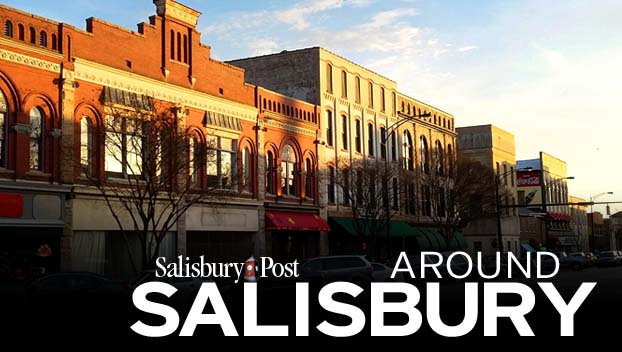Salisbury Public Art Committee endorses historical marker about 1906 lynchings
Published 12:00 am Tuesday, December 8, 2020
SALISBURY — A historical marker commemorating lynchings that occurred in 1906 cleared its first hurdle Monday when the city’s Public Art Committee agreed to provide a letter of recommendation for the project.
The marker would be adjacent to the Oak Grove Freedman’s Cemetery — between the curb and sidewalk along North Church Street. The project’s organizers say the location next to a cemetery and adjacent to the Rowan County Detention Center helps tell a broader story about the history of slavery, racial injustice and mass incarceration.
The goal of telling a more complete story, said Actions in Faith and Justice Co-Chair Susan Lee, is why the group chose not to pursue a location on North Main Street next to Rowan Museum (the old county courthouse) or the current courthouse. It’s in the area of the current Rowan County Courthouse where three men charged in the murder of the Lyerly family in the West Rowan community of Barber Junction — Nease Gillespie, John Gillespie and Jack Dillingham — and dragged from the county jail by an angry white mob to be tortured, lynched and shot.
Rev. Olen Bruner, co-chair of Actions in Faith and Justice, said a site on Main Street would not give passersby an adequate ability to reflect on the history described in the marker.
The Freedman’s Cemetery was established as a burial ground for Salisbury’s African-American population, enslaved and free. In the mid-2000s, several stones were removed from the granite wall separating an Old English Cemetery from the Freedman’s Cemetery to symbolize their shared history.
Kiara Boone, of the Equal Justice Initiative, said her organization would cover the cost of the historical marker and that there would not be a cost to the community. All that’s needed is permission to install the marker on the site that the community agrees on. She said the Equal Justice Initiative’s historical marker project aims to confront and recover from a history of racial violence and terrorism in America. The marker provides a way “for people who may not have had an experience with that to engage,” Boone said. Already, the project has placed markers in cities in Alabama, South Carolina, Georgia, Mississippi, Texas, Missouri, Tennessee, Virginia, Maryland, Ohio, Oklahoma and Minnesota.
Salisbury’s efforts to add a historical marker date back to a 2017 event to commemorate the 1906 lynchings.
Boone said the marker would contain white lettering on a black background describing local history about the 1906 lynchings on one side. On the other, there will be a more general narrative to contextualize the Salisbury incident. A pedestrian would be able to read one side of the historical marker and walk a few steps to read the other side.
She said the Equal Justice Initiative would take responsibility for maintenance, which could range from a fresh coat of paint to replacement.
Lee said Actions in Faith and Justice was specifically requesting a written letter of support for placing the monument near Freeman’s Cemetery between the sidewalk and the curb. That letter would accompany a request to the city of Salisbury and the Historic Preservation Commission.
“The committee can’t authorize it, but your support is key,” Lee said.
The committee agreed unanimously to approve Lee’s request, with a motion to approve by Ed Norvell and a second by Jenn Selby. Once a final letter is drafted, the Public Art Committee will give its final approval.




